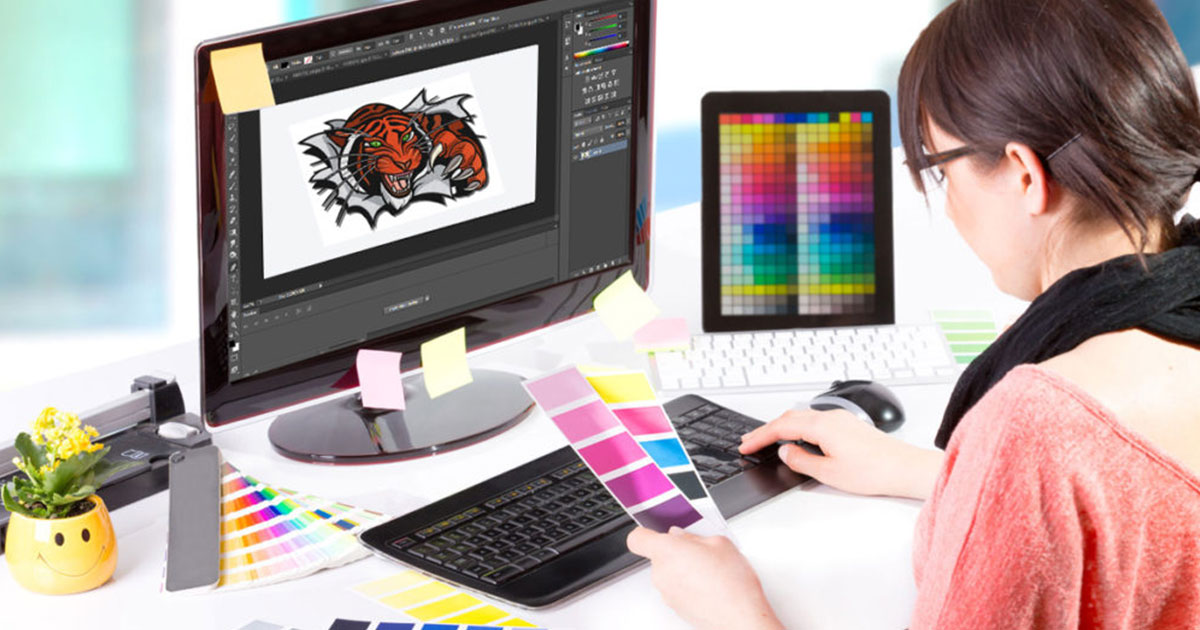Comprehensive Digitizing for Embroidery: From Layout to Sew
Wiki Article
Mastering the Needlework Digitizing Process: Your Ultimate Guide
Embroidery digitizing is a careful craft that calls for precision and knowledge to convert intricate styles right into electronic layouts for maker embroidery. As artisans begin on this trip to understand the embroidery digitizing process, an extensive understanding of the fundamentals establishes the foundation for quality.
Understanding Embroidery Digitizing Basics
Embroidery digitizing basics form the foundation whereupon intricate designs are translated into machine-readable formats for precise sewing. This first action in the needlework digitizing procedure is critical for making certain that the last stitched product is a devoted representation of the original design. Understanding embroidery digitizing essentials entails realizing vital principles such as stitch kinds, sew instructions, thickness, rug, and pull compensation.Sew kinds play a vital duty in establishing the aesthetic and textural end result of the stitched layout. By picking the proper stitch kind, whether it be satin, fill, or running stitch, digitizers can accomplish the preferred impact and improve the general high quality of the embroidery. In addition, sew instructions affects the circulation and measurement of the design, while thickness determines the spacing and coverage of the stitches.
Additionally, padding stitching supplies security to the design by protecting the textile and protecting against distortion during the needlework procedure. Pull compensation is an additional necessary factor to consider to counteract the all-natural tendency of textile to contract when sewn. Understanding these embroidery digitizing essentials is essential for creating professional-quality stitched products.
Choosing the Right Digitizing Software Application
Picking the suitable digitizing software program is a vital choice that considerably influences the efficiency and high quality of the needlework digitizing process. Digitizing for Embroidery. When selecting the appropriate digitizing software, it is vital to consider elements such as the intricacy of layouts you plan to produce, the user-friendliness of the software, the level of consumer assistance offered, and the compatibility with your embroidery machineThere are various digitizing software program options offered on the market, ranging from fundamental programs for newbies to innovative software program for professional digitizers. Some prominent selections consist of Wilcom EmbroideryStudio, Hatch Needlework Software, and PulseID. These software application bundles supply a wide variety of devices and features to help you produce complex layouts effortlessly.
Prior to deciding, it is a good idea to discover the various software options through cost-free look at more info trials or demos to determine which one ideal fits your demands. Additionally, reviewing reviews and looking for recommendations from skilled digitizers can provide beneficial understandings into the staminas and weak points of each software (Digitizing for Embroidery). By very carefully evaluating your requirements and comparing the features of different digitizing software, you can make an informed choice that improves your needlework digitizing process
Digitizing Tools and Methods

Optimizing Layout Setup for Needlework
Grasping the intricacies of style settings is essential in achieving optimum results in the embroidery digitizing process, building upon the structure laid by comprehending digitizing tools and methods. When maximizing layout setups for embroidery, it is essential to take into consideration aspects such as stitch type, thickness, rug, draw payment, and registration. Enrollment settings straighten different components of the style properly, preserving total style honesty.
Troubleshooting Common Digitizing Issues
When running into typical digitizing issues throughout the embroidery procedure, it is vital to recognize the source and carry out effective remedies quickly. One usual problem is stitch thickness issues, where stitches might be as well thick, triggering the textile to pucker, or also sparse, bring about spaces in the layout. Changing the stitch thickness settings in the digitizing software application can help fix this concern.One more constant challenge is string breaks during the embroidery procedure. This can take place due to different factors such as incorrect stress settings, dull needles, or utilizing low-grade string. Guaranteeing appropriate upkeep of the needlework machine, including routine needle adjustments and tension adjustments, can lessen the occurrence of thread breaks.
Additionally, layout enrollment errors can result in misaligned aspects within the needlework design. Checking the style alignment in the digitizing software application and making needed changes before stitching can assist in preventing this concern. By resolving these usual digitizing issues quickly and efficiently, you can make certain a smoother embroidery process and top quality completed items.
Conclusion
Finally, understanding the embroidery digitizing process calls for a strong understanding of the fundamentals, the appropriate option of software application, and expertise of devices and methods. Enhancing design settings and repairing typical digitizing issues are essential action in making certain high-grade needlework results. By adhering to these actions vigilantly, one can attain accuracy and efficiency in the digitizing procedure.Report this wiki page